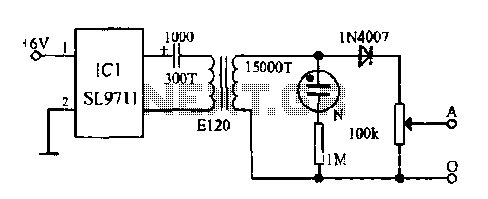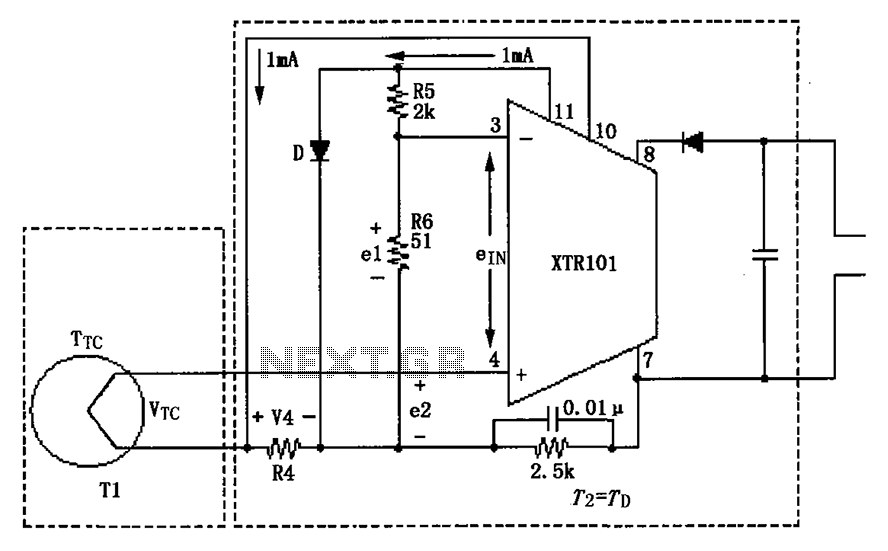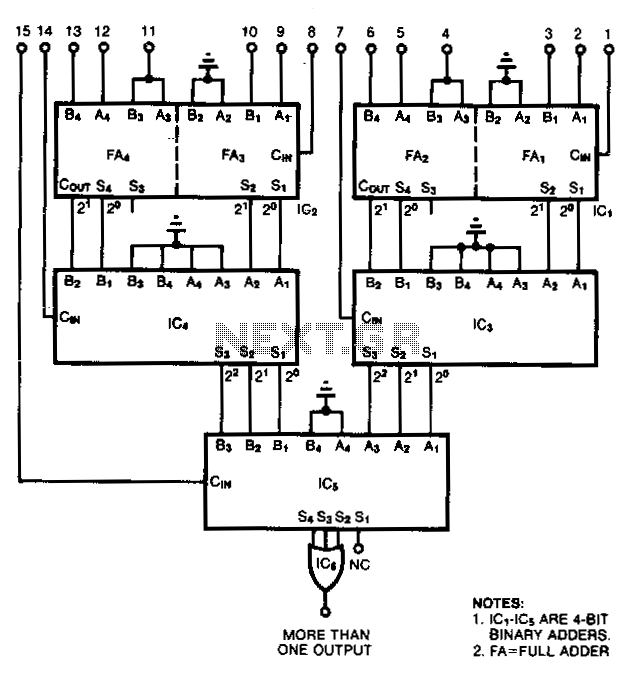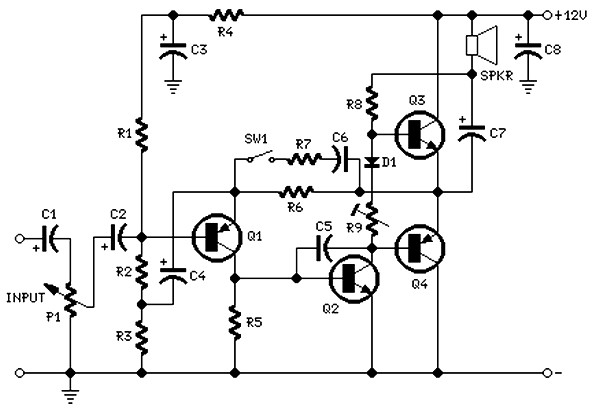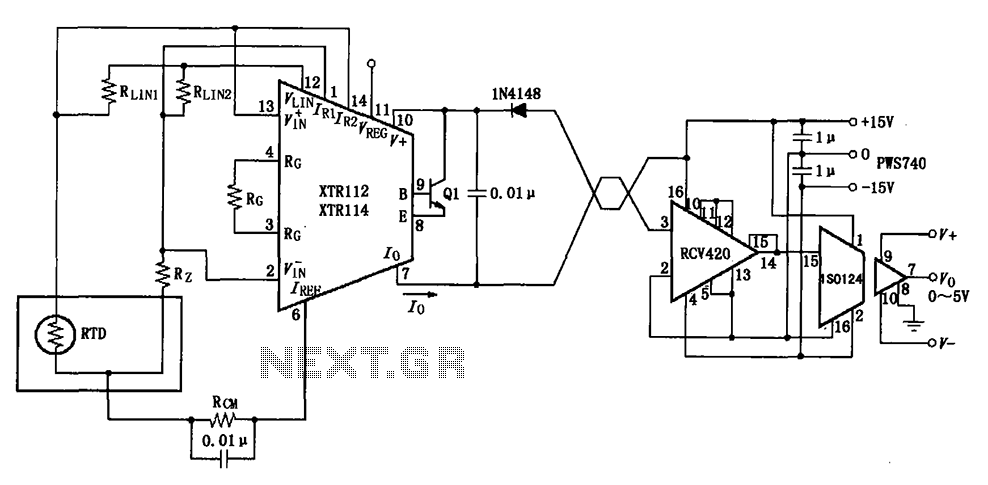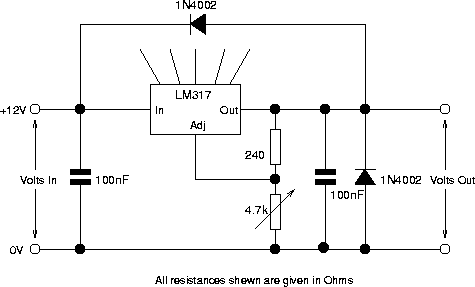
Ultrasonic Receiver Sircuit Diagram
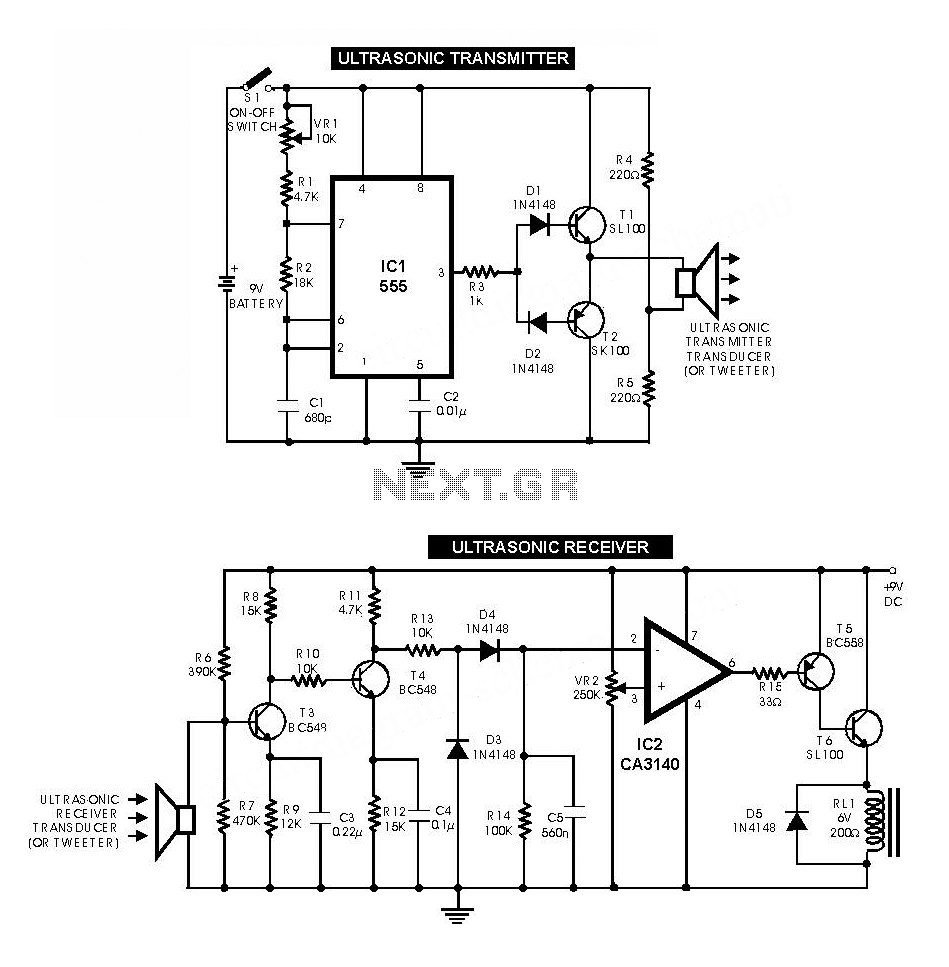
The following circuit illustrates an Ultrasonic Receiver Circuit Diagram. This circuit is based on the CA3140 integrated circuit. Features include the frequency of sound produced.
The ultrasonic receiver circuit utilizes the CA3140 operational amplifier, known for its high input impedance and low noise characteristics, making it suitable for sensitive applications such as ultrasonic signal detection. The circuit typically incorporates a piezoelectric transducer that converts ultrasonic sound waves into electrical signals.
When ultrasonic waves strike the transducer, it generates a small voltage signal corresponding to the frequency of the incoming sound. This signal is then fed into the CA3140, which amplifies the voltage to a more usable level. The gain of the amplifier can be adjusted through external resistors, allowing for flexibility in sensitivity based on the application requirements.
The output of the CA3140 can be further processed or analyzed, often interfacing with microcontrollers or signal processing units for tasks such as distance measurement or object detection. Additional components such as filters may be included in the circuit to eliminate noise and improve the clarity of the received ultrasonic signals.
Overall, the CA3140-based ultrasonic receiver circuit serves as an essential tool in various applications, including robotics, automotive systems, and industrial automation, where precise distance sensing and object detection are critical.The following circuit shows about Ultrasonic Receiver Sircuit Diagram. Thicircuit based on the CA3140IC. Features: The frequency of sound produced .. 🔗 External reference
The ultrasonic receiver circuit utilizes the CA3140 operational amplifier, known for its high input impedance and low noise characteristics, making it suitable for sensitive applications such as ultrasonic signal detection. The circuit typically incorporates a piezoelectric transducer that converts ultrasonic sound waves into electrical signals.
When ultrasonic waves strike the transducer, it generates a small voltage signal corresponding to the frequency of the incoming sound. This signal is then fed into the CA3140, which amplifies the voltage to a more usable level. The gain of the amplifier can be adjusted through external resistors, allowing for flexibility in sensitivity based on the application requirements.
The output of the CA3140 can be further processed or analyzed, often interfacing with microcontrollers or signal processing units for tasks such as distance measurement or object detection. Additional components such as filters may be included in the circuit to eliminate noise and improve the clarity of the received ultrasonic signals.
Overall, the CA3140-based ultrasonic receiver circuit serves as an essential tool in various applications, including robotics, automotive systems, and industrial automation, where precise distance sensing and object detection are critical.The following circuit shows about Ultrasonic Receiver Sircuit Diagram. Thicircuit based on the CA3140IC. Features: The frequency of sound produced .. 🔗 External reference
